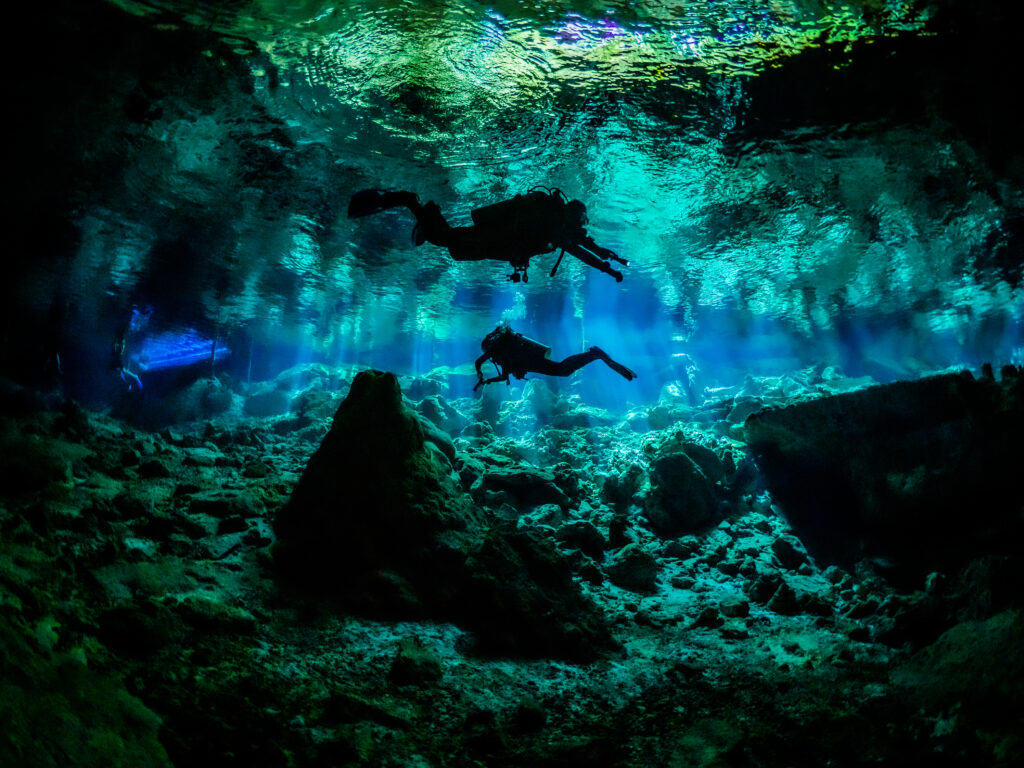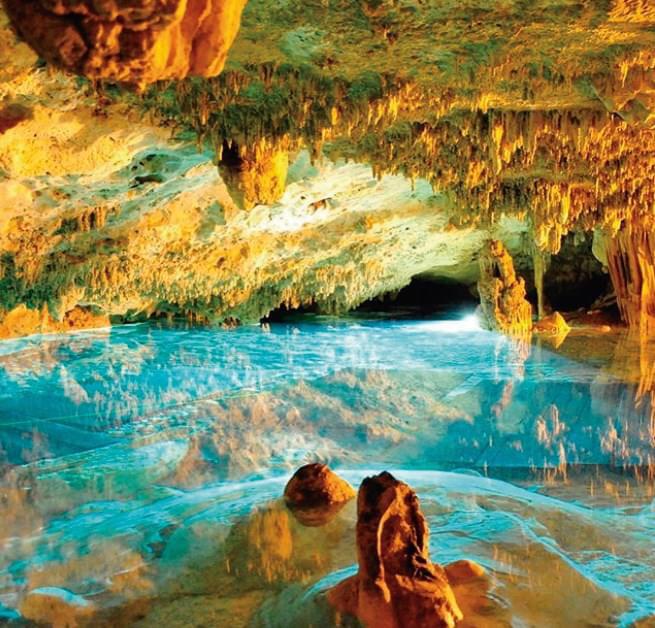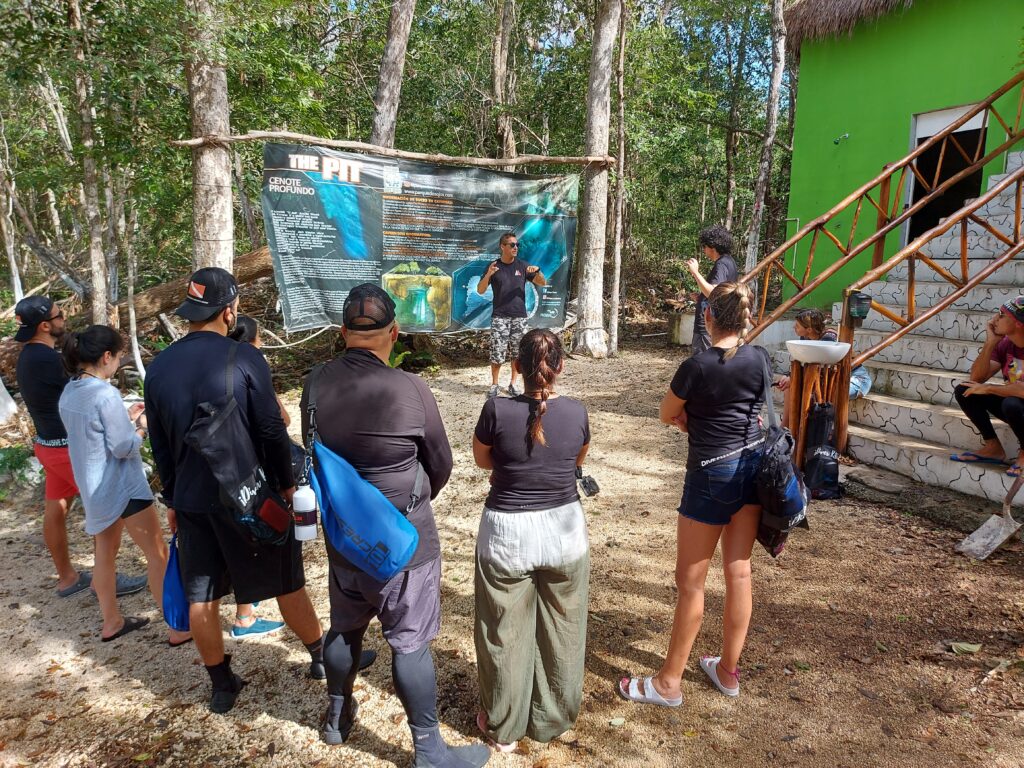Recreational diving in Cenotes

Recreational Diving in cenotes: Exploring the Underwater Wonders of Playa del Carmen
Recreational Diving in Cenotes:
The cenotes of the Yucatan Peninsula are natural treasures that attract every year divers from all over the world. Their uniqueness lies in the crystalline visibility of their waters and the diversity they offer to diving enthusiasts.
What are cenotes and how were they formed?
Cenotes are underground pits and caves that formed over 10,000 years ago after the glacial era.
The ground of Quintana Roo was previously covered by the sea. After the glacial age, the sea level receded, exposing the corals and a limestone floor.
Due to the constant dripping action caused by rain and the fragility of the limestone soil, freshwater carved a path underground, gradually creating stalactites, stalagmites, and columns throughout the tunnels.
It is not uncommon to find marine fossils dating back thousands of years as well as prehistoric bones.
A true cultural heritage and a unique experience in the world.

Cenotes that you will be able to discover in a recreation diving configuration with JG.Scubadiving:
Diving Levels and Requirements
Cenote diving is considered recreational diving.
Indeed, the depth of the caverns ranges from 6 meters to 60 meters for the deepest ones, with almost direct access to the surface.
They offer options for divers of all levels starting from Open Water Diver level.
It is only recommended to have good buoyancy to fully enjoy the experience while preserving these wonderful underwater cathedrals.

Exploring Underwater Beauty
The Quintana Roo region has more than a thousand cenotes. For cave diving, over a dozen areas are available for divers with a level of Open Water Divers. Each cenote offers a unique and special experience.
Practical Details for Your Cenote Experience.
- The departure time is scheduled for 08:00 a.m.
- Travel by off-road vehicles for 30 minutes to 1 hour, depending on the chosen site and your hotel.
- The maximum number of divers per group is 4 per guide to ensure safety and quality
- A typical diving day includes 2 dives, each lasting 45 minutes, with the possibility of a third.
- A snack is provided between dives (Mexican sandwich, fruits, cookies, and cold or hot beverages).
- Depending on the chosen cenote, non-divers can explore some cenotes with guided snorkeling.
Difference Between Caverns and Caves
In diving, caverns allow you to dive beneath a ceiling while maintaining almost constant natural daylight visibility and nearly immediate access to the surface.
They are accessible to divers starting from Open Water Divers.
On the other hand, caves require technical training in spelunking due to their more complex nature.
Therefore, we distinguish between cenote diving (cavern), which is accessible from lan Open Water Diver level, and cave diving (cave), which is reserved for technically trained divers familiar with cave diving techniques.